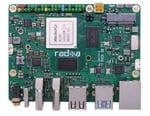New models of single-board computers (SBCs) are emerging with increasingly powerful features to the point that, in some cases, they can replace traditional computers in tasks that we couldn’t imagine before, such as displaying video on multiple outputs in 8K resolution, emulating elaborate games, editing images, and even recording video content. But is this board really that powerful?
With a robust and unmistakable look, the Rock 5B is an SBC that has conquered many fans since it was launched and it’s not difficult to understand why; after all, it has a little bit of everything!
While other manufacturers followed different sizes and standards, Radxa seems to have listened to some requests and created something that meets users’ expectations, even if it meant a bigger board. This seems to have made a difference, as it has increased processing power and added flexibility for use cases.
Read along to check out every detail of this impressive board including what sets it apart so that you can see if it’ll suit your needs. We’ll also go over a couple of alternatives in case you’re not convinced.
Features
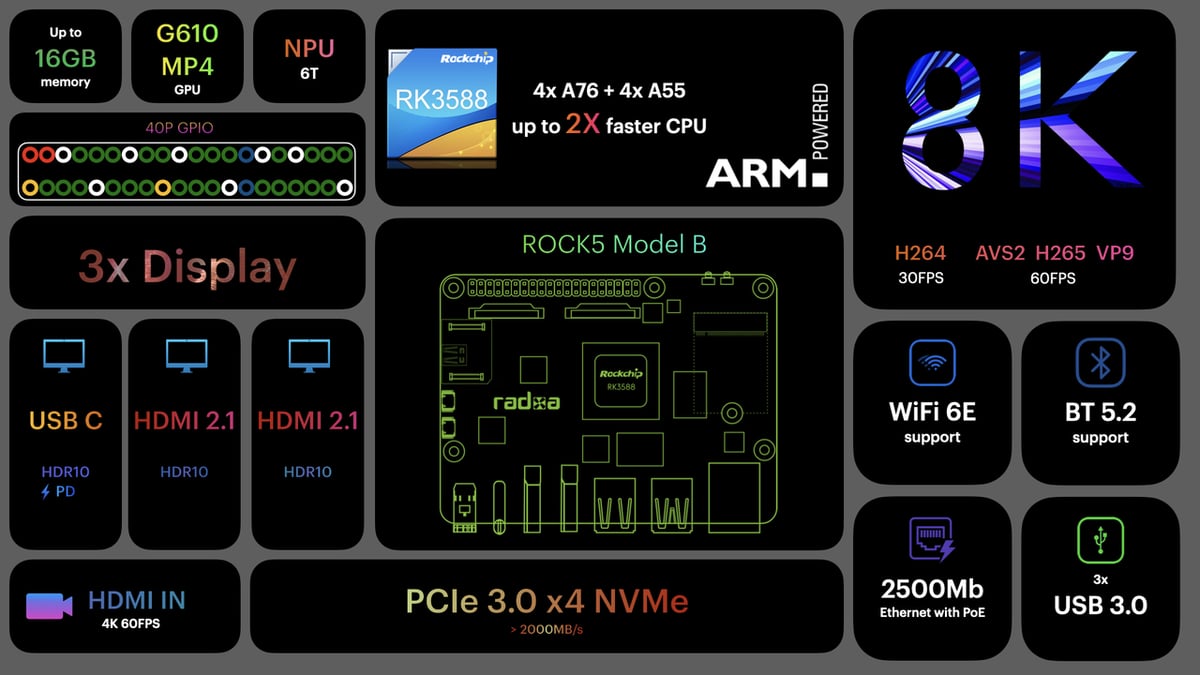
Whether you want to make a game emulator console, a mini computer, a robot, or even a media center, this SBC may be an answer to your needs. Let’s check out the board’s main details.
Processing Power & Performance
Based on the 64-bit SoC Rockchip RK3588, the Radxa Rock 5B brings great processing power capable of performing many powerful tasks, even allowing for video editing and AI applications like object recognition, reaching up to 6TOPs and supporting INT4/INT8/INT16/FP16 hybrid operations. This is due to the combination of the octa-core CPU cluster, with four ARM Cortex-A76 cores at 2.4 GHz and another four Cortex-A55 cores at 1.8 GHz, which together with the Mali G610MC4 GPU, is capable of providing a lot of processing power in up to three video outputs. The GPU also supports OpenGLES 1.1, 2.0, and 3.2, OpenCL up to 2.2, and Vulkan 1.2, which together with the special 2D hardware engine, maximize the screen performance to provide smooth operation.
Versatility & Compatibility
In terms of application, the Rock 5B is prepared with an arsenal of resources to meet the most varied cases, so it’s possible to find several possibilities of expansion both for storage and for other resources that aren’t built in. The two M.2 slots allow you to use a Wi-Fi 6 card and Bluetooth 5.2, as the top slot supports these technologies. The PCI-e 3.0 of up to 4GB/s with NVMe makes it possible to guarantee a good storage speed.
We mustn’t forget that, in addition to these features, the board also has a GPIO with 40 colored pins that facilitate the most varied applications, especially because you can find variations of this model with up to 16 GB of RAM. Lastly, this SBC also comes with a 2.5 gigabit Ethernet and PoE support via the dedicated header for the expansion module.
Video I/O Options
It’s no longer that new to find up to two video outputs on a single-board computer, but the Rock 5B has expanded it to three outputs and even added a Micro-HDMI input to capture video with HDMI 2.0 Protocol. It can support video input up to 2160p 60Hz.
It’s worth noting that the frame rate can be a bit slow for capture in Debian 11, so this feature may have better performance with Android systems. The two main HDMI 2.1 video outputs can deliver up to 8K at 60 FPS and even has a third output with display port support 8K at 30 fps via USB-C if needed. In addition to all these video options, it also has the well-known MIPI DSI and CSI ports for camera and screen that are of great help for leaner and more specific projects.
Reviews
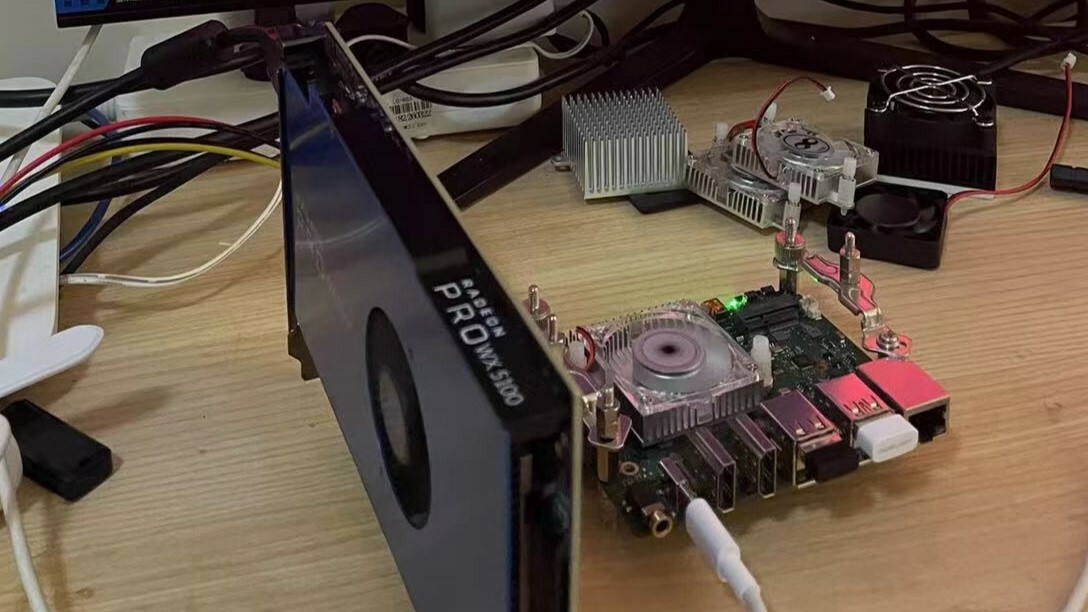
Taking advantage of the chip shortage and the high market prices of its competitors, Radxa bet big by bringing a model of ITX size that intrigued many and at the same time drew attention – it’s not so common to find SBCs in this size.
Despite being larger, it doesn’t house wireless capability and built-in storage, but this hasn’t been a problem for most users. In fact, it can be useful for customizing the final structure, depending on the case. Many reviewers of this board are finding out what it’s capable of delivering effectively, and one of the most complete reviews comes from Jeff Geerling.
In the various tests he carried out, he verified that, compared to the Raspberry Pi 4, the Rock 5B can be three times faster in terms of processing alone and up to seven times faster with PCI-e 3.0 storage of up to 4GB/s, if resembling speeds of 7th generation Intel.
Among many important points highlighted, on the negative side, is the fact that the USB Type-C power supply wasn’t able to boot with some alternative sources, even though it was 30 W, equivalent to Radxa’s original. Another consideration is the MicroSD slot that allows the card to be inserted upside down and the need for an adapter for M.2 SSDs smaller than the 2280 size.
In spite of its many positive aspects, Jeff noted that the Rock 5B may not be so friendly for beginners since it doesn’t have as much of an online presence in forums yet and has some information on the manufacturer’s website that may end up confusing novices.
In other reviews, it’s possible to observe Steam games working as well as they would on a regular desktop. The excellent performance with games can be noticed in different operating systems such as Armbian, Reborn OS, and Android, and several other interesting third-party and community-built images can be found in the Radxa downloads section. Regarding Debian 11, there’s an interesting “debug party” made by Jean-Luc Aufranc that’s worth looking into if you want to learn more about it.
Tech Specs
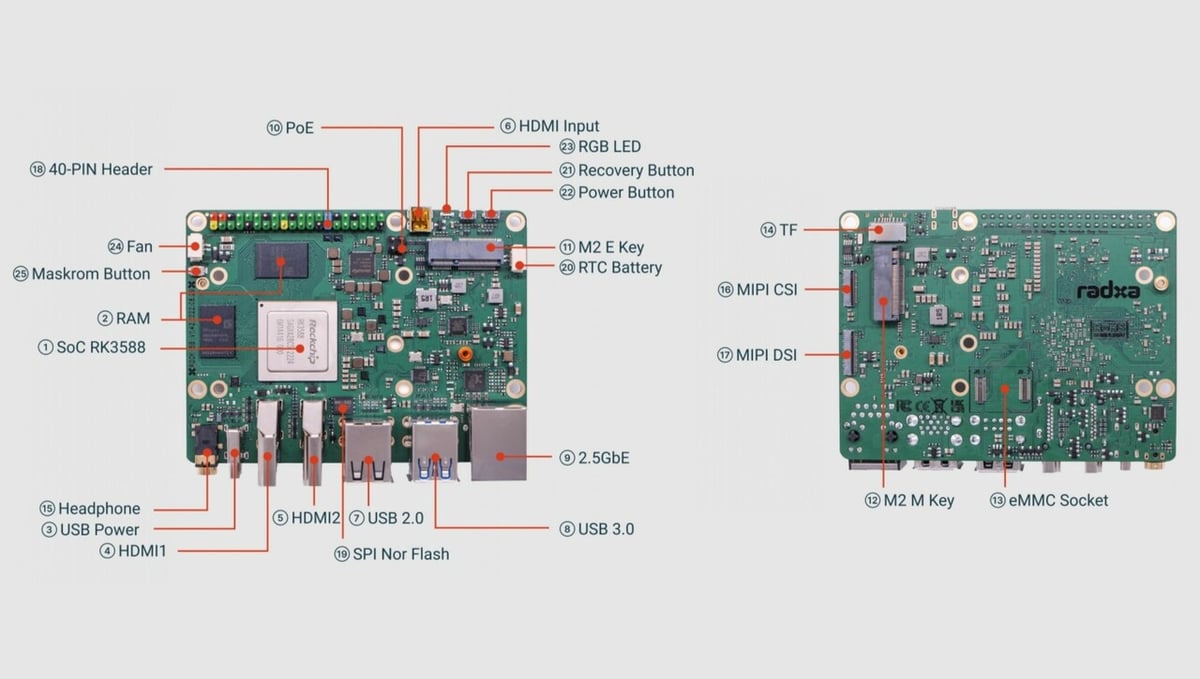
There really is a lot to discover here. With each look, new details seem to appear, like the power and reset buttons and the possibility of using all storage options simultaneously, which can make a big difference in everyday life. Another important thing worth noting is the Maskrom Button, which is a special operation mode for the CPU to wait for the command from the USB OTG port. The Maskrom button is needed when writing the images to SPI Nor Flash or eMMC.
Below is a summary of the main specifications:
- CPU: 8-Core 64-bit Rockchip RK3588 with 8nm, Quad A76 2.4Ghz and Quad A55 1.8Ghz
- GPU: Mali-G610 MP4
- NPU: 6TOPs supports INT4/INT8/INT16/FP16 hybrid operation
- Memory: 4, 8, or 16 GB (LPDDR4/4x)
- Storage options: Up to 128 GB eMMC socket, MicroSD TF slot, bottom M.2 socket supports PCI-e 3.0 4GB/s NVMe
- Wireless connectivity: Nothing built-in, M.2 up Socket supports Wi-Fi 6E and BT 5.2
- Ports and slots: 2x USB 2.0, 2x USB 3.0, 40 pins GPIO interface (UART, PWM, I2C, SPI, CAN…), RTC battery connector, 2.5 GbE port, fan connector, PoE header, Mini-HDMI input, 3.5-mm audio jack with mic, MIPI CSI and DSI
- Size: 72 x 100 mm (Pico-ITX form factor)
- Input voltage: Type-C 12V/15V/20V with 2-A current or higher output (30W original Radxa source)
Price
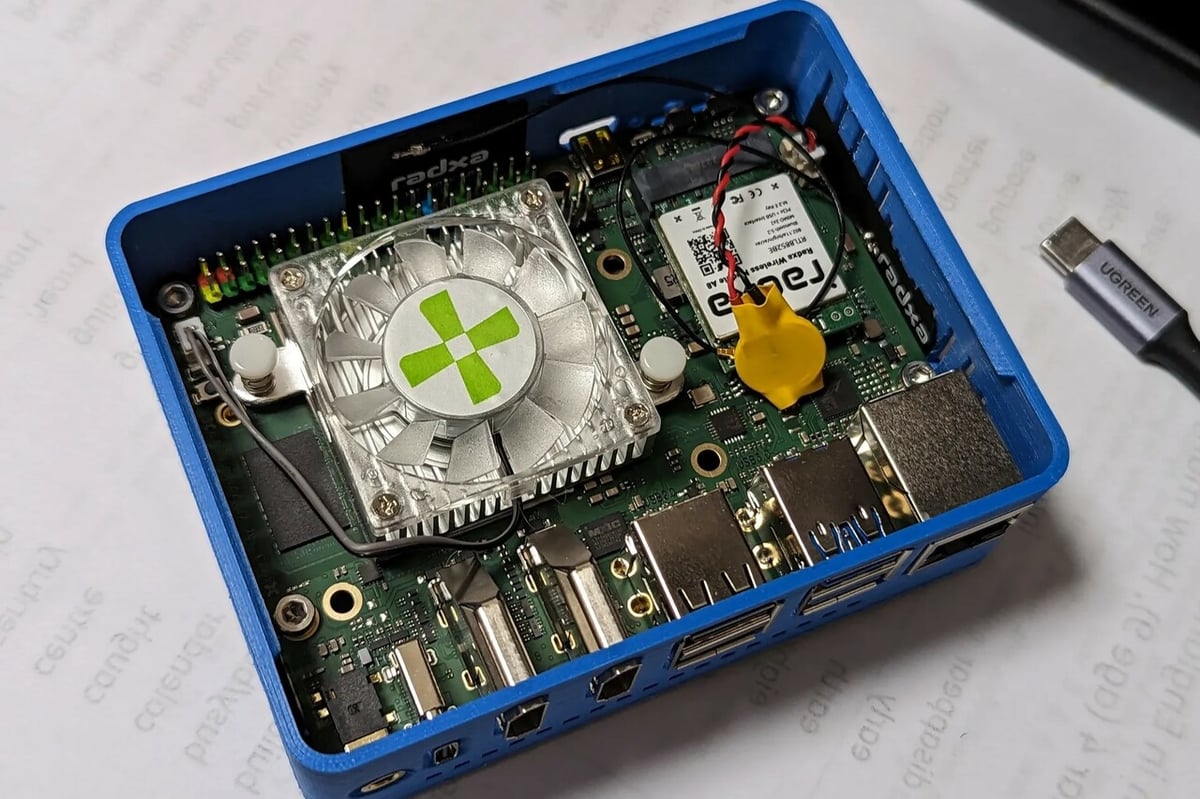
With everything we’ve seen above, it’s possible to say that Rock 5B is an SBC with remarkable performance. It could be the solution you’re looking for, but what about the price of this massive board? Let’s check it out!
While the Raspberry Pi 4 and its competitors still suffer from high prices starting at around $159 for the 2-GB model and up to $190 for the 8-GB model on some resellers, it’s not surprising that people are looking for alternatives. The Rock 5B has been gaining ground because even though it’s more expensive with 4-GB models at around $180, it also ends up being more versatile if you decide to use the card in other projects.
Radxa’s initial model has 4 GB, while the 8 and 16 GB models are costing over $210 and $240 respectively on some online retailers. We’re only talking about the price of the card itself, without power supply, case, or even heatsink.
When it comes to safekeeping, the official Rock 5B case can be found for around $30, but it’s also possible to find cheaper options like an acrylic case for a little under $15, while an active cooler with heatsink can be found at around $9. And you can always go the DIY route, of course.
Even though the most complete 16-GB kit, including a model with 128 GB eMMC, will predictably have positive reviews, it’s also important to remember that competitors also suffer from high prices. This is why you shouldn’t be surprised that a kit will set you back about $400.
Similar Devices

As mentioned, maybe the Rock 5B isn’t enough or it’s too much for you. Let’s take a look at some of the most popular options out there today, which may be a better fit for your needs.
Raspberry Pi 4
There are many different boards on the market today, and the Pico-ITX design of the Rock 5B isn’t as popular as the size standards of other SBCs like the Raspberry Pi 4. However, nowadays it’s not a problem to adapt a custom case or even design it yourself. The Rock 5B is a great reference in the market and it’s an important option to consider since it promises improved availability, and with it, a possible drop in value of its competitors.
Unlike the Pi 4, on the Rock 5B it’s possible to use the eMMC at the same time as the MicroSD card. Even with some graphics bugs found in operating systems such as Debian 11, other operating systems work reasonably well. The Rock 5B has been called the “almost” Raspberry Pi 4 killer, and although some aspects can still be improved, it has shown plenty of power to please users – especially those who enjoy games. After all, it’s undeniable what the combination of the SoC 3588 with convenient high-speed storage can accomplish in this regard.
Taking into account the prices of some desktops on the market, system performance, and lacking support, it’s really not possible to match a common desktop. However, the Rock 5B is much more powerful and energy-efficient compared to the Raspberry Pi 4 despite getting very hot, and an efficient cooling solution is highly recommended. It’s also possible to take advantage of PCI-e 3.0 from the M.2 slot to use adapters for conventional PCI-express and NIC.
Orange Pi 5
The Orange Pi 5 is a relative newcomer with a processor as powerful as the Rock Pi 5B despite being a slightly different variant that uses the SoC 3588S. What’s arguably most impressive about this competitor is its entry-level prices, starting from around $75 for models with 4 GB of RAM. Despite being cheaper, the Orange Pi 5 is a little bigger than the Raspberry Pi 4, but it’s smaller than the Rock Pi 5B, measuring 62 x 100 mm. And even though it doesn’t have as many ports as the Rock 5B, it still has a beefy HDMI port, and it may be worth noting that the MicroSD slot doesn’t let you put the card upside-down.
If you’re looking for an SBC exclusively to build a game emulator and need to save money, the Orange Pi 5 is really an option worth considering. Its processing power is equivalent to that of the Rock 5B, however, it’s a more powerful SBC. If you’re looking for processing power and aren’t picky about storage performance, this is a good option to consider since the Orange Pi 5’s M.2 slot is PCI 2.0.
License: The text of "Radxa Rock 5 Model B: Specs, Price, Release & Reviews" by All3DP is licensed under a Creative Commons Attribution 4.0 International License.
CERTAIN CONTENT THAT APPEARS ON THIS SITE COMES FROM AMAZON. THIS CONTENT IS PROVIDED ‘AS IS’ AND IS SUBJECT TO CHANGE OR REMOVAL AT ANY TIME.
